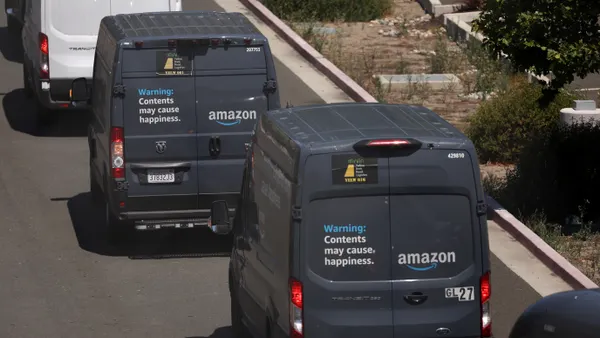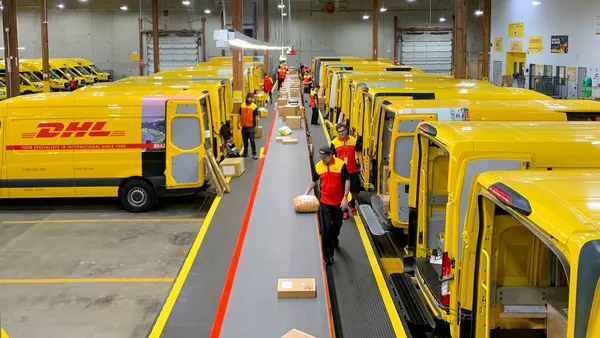Dive Brief:
- The trucking industry's driver shortage is leading to price hikes and delays across the food industry, according to Supermarket News.
- Currently, trucks carry more than 70% of the goods consumed in this country. The American Trucking Associations (ATA) estimate that 2017 saw its greatest driver shortfall to date, and could reach 174,000 unfilled driver positions by 2026.
- An aging driver population and lack of interest in the industry among younger workers is a leading contributing factor to the shortage. A lack of qualified applicants is another problem for transportation companies.
Dive Insight:
Retailers and manufacturers are feeling the pinch as a result of the driver shortage. Problems like product shortages, delivery delays and higher prices are just some of the impacts.
Some retailers, like Walmart and Kroger, have begun fining suppliers for late deliveries, and those fines could start to pile up as workforce shortages strain delivery fleets. Kroger charges suppliers $500 per day for deliveries made past a two-day window, while Walmart levels monthly fines against companies that are worth 3% of the value of each late or incomplete shipment. Walmart also charges for deliveries received too early.
According to the Food Marketing Institute, grocers lose $75 billion a year in sales — 10% of the industry total — due to out-of-stocks and unsalable goods, often the result of late deliveries.
The trucker shortage has fleets caught in something of a catch 22. They’re more likely to make a late delivery if they’re short on drivers, and the fines they incur chip away at the extra money they need to offer to incentivize workers to sign up.
In order to keep up with increased shipping demands, roughly 90,000 new drivers would need to be hired every year.
If fleets can’t find new drivers, expect those numbers to increase. If the problem isn’t solved, it wouldn’t be surprising to see retailers and manufacturers pass the cost of those loses on to consumers.














